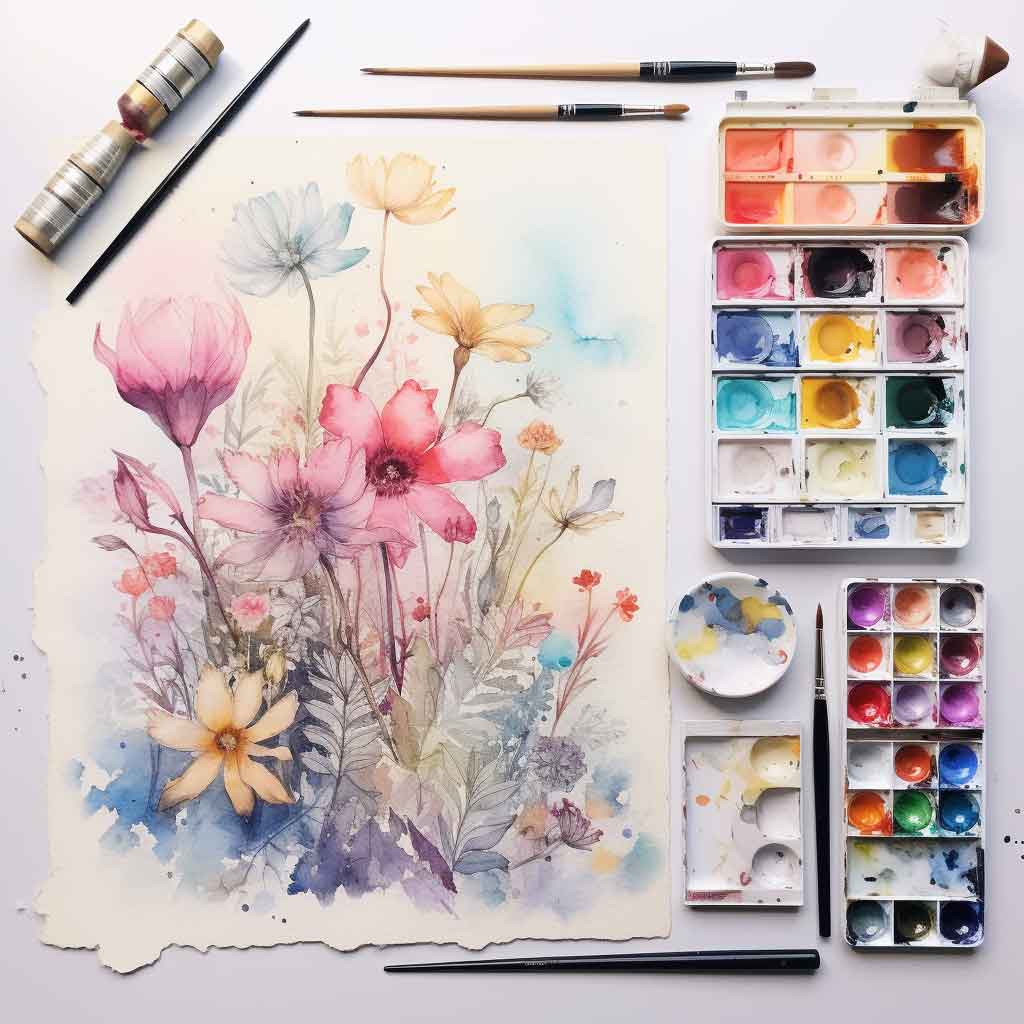A Step-by-Step Introduction to Watercolors

A Step-by-Step Introduction to Watercolors
Artists have been drawn to watercolor drawing for hundreds of years because of its fluidity and ethereal beauty. If you want to become a painter or just try new kinds of art, you need to know the basics of watercolor. This introduction will show you the basics of watercolor painting, including the most important techniques, tools, and ideas that will give you the confidence to show your imagination.
The Canvas and the Palette: Getting Your Supplies Together
It’s important to get the right tools together before you can start painting with watercolors. Knowing what you have, from the type of paper to the different brushes to the range of colors, is the first step in becoming an artist. We’ll talk about the different kinds of watercolor paper, their feels and weights, and how they affect your drawing. Learn about brushes and how the different sizes, shapes, and types of bristles affect the way you paint. Discover the basic colors that will help you build your art projects and learn about the wide range of watercolor pigments, including the difference between pans and tubes.
How Watercolor Paints Work
Watercolor paints are more than just a bunch of colors on a plate; they’re like magic potions that make your ideas come to life. We will learn about the interesting world of watercolor paints in this chapter. To choose the right colors for your palette, you will need to know about pigments’ properties, such as their lightfastness, granulation, and clarity. Learn the subtleties of mixing colors to make an infinite number of shades, which will allow you to make more complex and creative art.
What You Need to Know About Brushes and Paper
Your paints and paper are tools that help you express yourself artistically. We’ll look more closely at how a watercolor brush is put together and learn about the different shapes and how they affect the way you paint. Find out what makes a good brush work and how to take care of these useful items. Explore the world of watercolor paper at the same time and learn how important texture, weight, and size are. Find out how to pick the right paper for different crafting methods and artistic goals.
Techniques Revealed—A Symphony of Strokes
There is a dance between water, paint, and paper in watercolor drawing. This chapter will teach you basic techniques, such as how to use wet paint on wet paint to make soft blends and how to use wet paint on dry paint for precision. To get the results you want, you need to know how to control timing, pressure, and water. We will figure out how to use dry brushing to add texture and lifts to add highlights and depth. As you make more strokes, you’ll feel more confident in your painting skills.
The Palette of Emotions – Color Theory
Color theory is an artist’s secret weapon, and learning how to use it well is a must for making watercolor drawings that look good. Look into the main, secondary, and tertiary colors on the color wheel. Learn how different color schemes, from harmonious pairs of colors to lively pairs of colors that go well together, affect your mind. Learning how to mix colors will help you expand your color choices and give your art more feeling and meaning.
Adding Depth and Texture: More Than Just a Brush
One thing that makes watercolor stand out is its unique ability to show depth. This chapter looks at methods other than the brush, including using salt, splattering, and masking. Learn how to use overlapping washes to give your paintings depth and mood. Try using different methods and tools to give your paintings more depth and texture, turning them from flat images into tactile and immersive experiences.
Getting Good at Controlling Water
When you paint with watercolors, water can help you and hurt you. Controlling water well is like leading a symphony: you need skill and intuition to do it well. Learn how to control the flow of water, change the amount of wetness, and make color changes that look smooth. If you know how to handle the water properly, you can make watercolor compositions with smooth washes, fine details, and complex layers.
Dealing with Problems – Fixing Common Problems
Even watercolor artists with a lot of experience run into problems. You can use this chapter to learn how to fix common problems like paper buckling and color bleeding. With these useful tips and answers, you’ll be able to get past problems and keep exploring your art with confidence.
The Final Product: Making a Watercolor Composition
Now that you know the basics of watercolor, it’s time to put your skills to the test and make a full painting. The steps in this chapter will show you how to plan, sketch, and paint a watercolor picture from beginning to end. Learn how to make focal points, keep things balanced, and add your own artistic style to every brushstroke. Enjoy the fun of making your ideas come to life on the painting.
Embracing the Watercolor Journey
Finally, learning the basics of watercolor isn’t just a way to improve your painting skills; it’s also a chance to explore your own creativity and learn more about yourself. Every stroke, color choice, and material an artist makes tells a story that is only theirs. As you go through the step-by-step guide to watercolor, enjoy how unpredictable it is and let the medium’s ups and downs become the rhythm of your artistic symphony. Have fun painting with watercolors! May your brushes move and sing, and may your trip be as endless as your imagination.